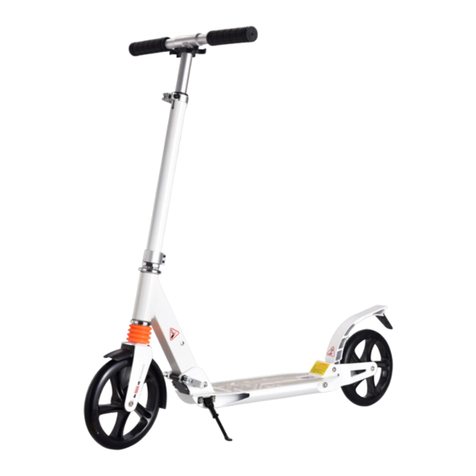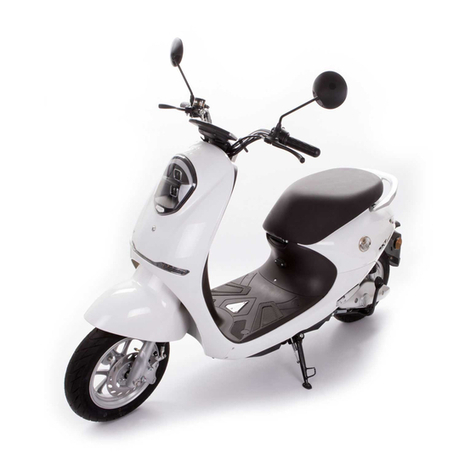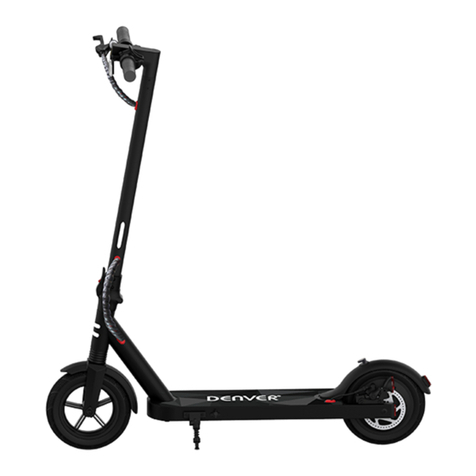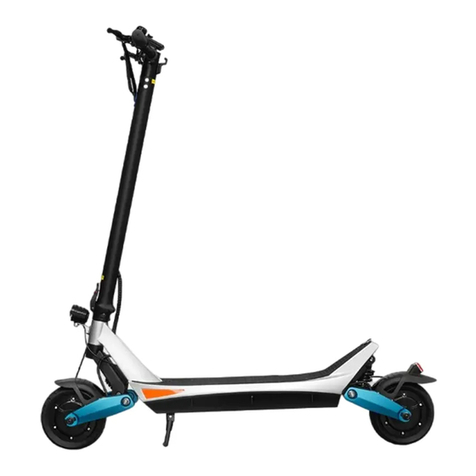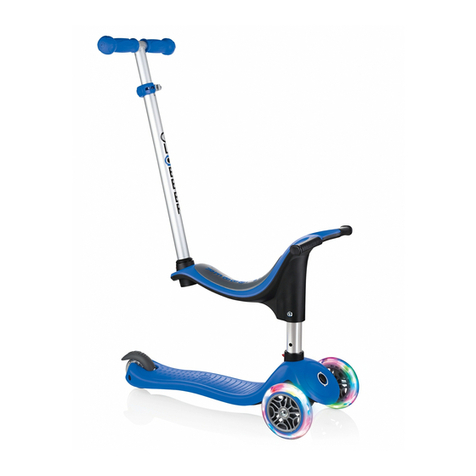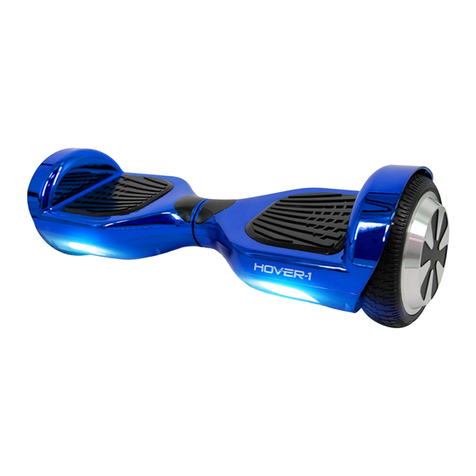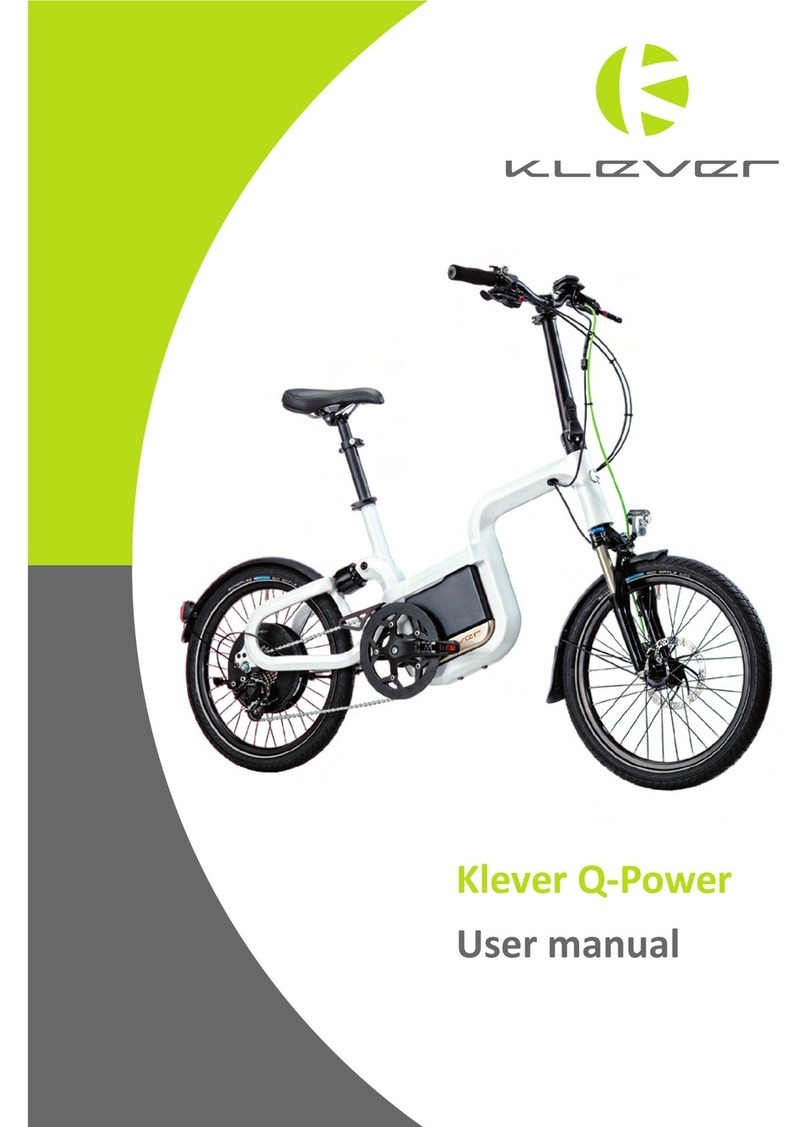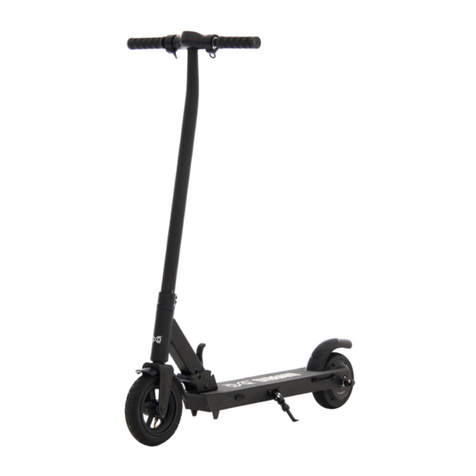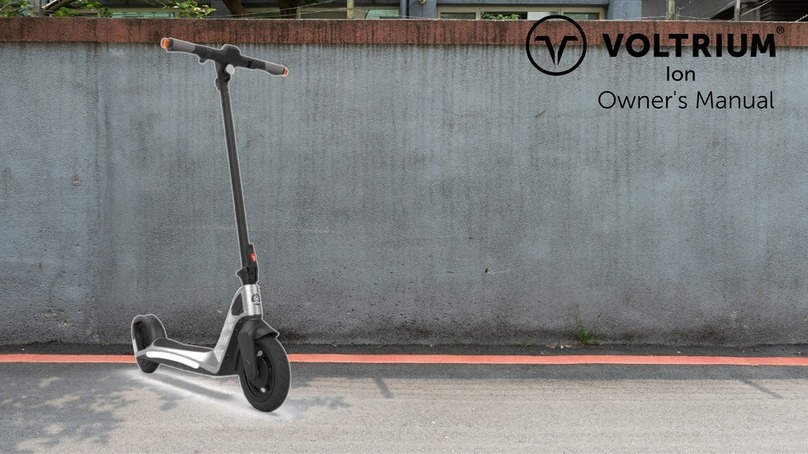Neodrives Smart MMI User manual

USER MANUAL
neodrives sMMI and motor
(sMMI Firmwareversion 1.4.0.0)

8
1
Contents
1. Introduction 2
1.2 Intended use of the neodrives components 2
1.3 Signs and symbols 2
1.4 Permissible operating conditions/ operating sites 2
1.5 Standard scope of delivery (neodrives components) 3
1.6 Technical data 3
2. Controller 4
3. smart Man-Machine Interface (sMMI) 4
3.1 Fitting and removing the sMMI 5
3.2 Functions of the sMMI 5
3.2.1Switching on and off 5
3.2.2 Start menu 6
3.2.3 Dynamo function and start-up routine “light” (optional) 6
3.2.4 Selecting the assistance level 6
3.2.5 Activating recuperation 7
3.2.6 Braking assistant 7
3.2.7 Pushing aid 9
3.2.9 Travel modes 10
3.2.10 Displaying journey information (bike computer functions) 11
3.2.11 Information and warning symbols 12
3.2.13 Other settings 13
3.2.14 USB port 13
3.2.15 Programming options by the specialist dealer 14
3.2.16 Firmware updates and relaying them to the motor and battery 14
3.2.17 Note on the sMMI plugs 15
4. Thermal management 15
5. Motor 17
5.1 Removing the drive wheel 17
5.2 Attaching the drive wheel 18
6. Cleaning the motor and sMMI 19
6.1 Motor 19
6.2 sMMI 19
7. Transportation 19
8. Safety precautions 19
9. Error indications and possible remedies 20

2
1. Introduction
1.1 Important instructions – please observe at all times.
Along with this operating manual, your Pedelec comes with additional documents.
Please observe the specifications and instructions in these documents.
It is not a legal requirement at present to wear a helmet when using a Pedelec.
Nevertheless for your own safety, wearing a helmet is recommended!
1.2 Intended use of the neodrives components
Your Pedelec, equipped with neodrives components by the specialist dealer on delivery, is designed as
•a hybrid bicycle for ordinary personal transport in public road traffic, or
•a mountain bike that is particularly geared towards off-road
use.
Adjustments and repairs to the Pedelec and its individual components only apply as intended use insofar as they are explained and
permitted in this operating manual, in the operating manual of the Pedelec manufacturer, the instructions of the component manufacturers
or other documents included when purchasing your Pedelec.
The manufacturer accepts no liability for damage caused by negligence as a result of misuse, improper maintenance or repairs or improper
use. It is the responsibility of the rider to check the Pedelec as required, to have any work carried out on it and to use it responsibly.
This operating manual only describes the use of the neodrives components fitted to your Pedelec and corresponds to the state of the art at
the time of print. The manufacturer reserves the right to make changes resulting from further development of the mechanics, software or
legal requirements.
The manufacturer regards the following cases as examples of misuse of the neodrives components fitted to your Pedelec:
•Use of the drive system that contravenes the instructions and recommendations in this operating manual.
•Exceeding the technical limits laid down in this operating manual.
•Technical modifications to the neodrives components.
•Modifications to the software of the neodrives components.
•Unauthorised attachments or use of the neodrives components on bicycles or a different Pedelec to the one supplied to you.
The manufacturer shall not be liable for any damage caused by misuse of the components.
Before using the device, carefully read all safety and hazard information contained in the individual chapters of
this operating manual and all other enclosed documents.
1.3 Signs and symbols
Important information for your safety are identified in this operating manual as follows:
Indicates tips and special information
Warning against possible hazards to your health, indication of possible injury risks;
Warning against possible technical problems or damage
Observe these indications at all times to avoid injury to people and damage to the product.
1.4 Permissible operating conditions/operating sites
Neodrives components can be used at temperatures between -20 °C and +50 °C.
Also observe the information on permissible operating conditions in the Pedelec manufacturer’s operating instructions. Any limits regarding
the permissible operating conditions (e.g. maximum climbing capability, maximum permissible height of obstacles, max. load, etc.) must
also be observed when using the Pedelec!
Observe the safety and hazard information provided in the individual chapters of the operating manual.
!
!
i
!

8
3
1.5 Standard scope of delivery (neodrives components)
•Drive motor
•Smart MMI (display) incl. dock
•This operating manual
1.6 Technical data
Drive
Range*: 120 km
Speed 25 km/h
Power rating (peak) 250 Watt (650 Watt)
Operating voltage 36 Volt
Rated torque 12 Nm
Peak torque 40 Nm
Level of efficiency 80 % (incl. electronics)
Control system performance electronics integrated into the wheel hub
Cassette receiver commercially available plug-in cassette, up to 10 times
Brake disc from 160 mm diameter
Torque receiver variable torque supports can be adjusted to the dropout
Weight 4.36 kg (just the drive including plug and cable, without brake disc, free wheel, cassette)
Smart MMI
Display control monochrome
Display diagonal, resolution 2.4 inch, 240 x 320 pixels
Dimensions sMMI without dock (W X L X H) 53 mm x 85 mm x 14 mm
Connectivity Micro-B 1.1 USB, 5 volts power supply, 500 mA
connection to PC with diagnosis and parametrisation software
Mechanical / electrical contacting twist-to-lock mechanism, corrosion-protected contacts, spring loaded
Illumination LED backlight, 70–350 cd/m²
Display screen scratchproof, hardened acrylic glass screen
Weight of the sMMI (detached) 55 g
Smart MMI dock
Controller 23 mm inside diameter, 3 buttons (up, down, menu), hard wired
Mounting plate stem and handlebar mounting, angle can be adjusted in 10° steps,
height can be adjusted using spacers
Weight (incl. cable and remote control) 60 g
Entire system
Operating temperature - 20 °C to + 50 °C (below 0 °C recuperation or the braking assistant is automatically
deactivated)
Protection rating IP65
(*) The range depends on the battery used and on the terrain and the prevailing travelling conditions. The specified range can be achieved
at optimum travelling conditions (for instance level terrain, recently charged batteries, ambient temperature of 20 °C, smooth journey
etc.), a driving power of 100 watts and a pedalling efficiency of 100 watts.
We reserve the right to modify the design and technology of our products to incorporate the latest developments.
This operating manual is available for download on our website www.neodrives.de. If you require a version that is written in a larger
font, contact our Alber Service Center.

4
2. Controller
The controller fitted to the handlebar of your Pedelec is used to access menus and
activate functions in the sMMI. The following functions are stored:
Button 1 = UP (one step upwards)
Button 2 = confirm menu key or selection
Button 3 = DOWN (one step downwards)
3. smart Man-Machine Interface (sMMI)
The sMMI is fitted to the handlebar or stem of your Pedelec. Using the controller’s buttons (see section 2) you can access various functions
and activate or deactivate parameters.
For some functions you can also permanently store various parameters in the software of the sMMI (see section 3.2.15). Please contact
your specialist dealer in this regard, they will be happy to advise.
The following provides an overview of the menu structure of the sMMI for further information.
Back
Easy Display
Date
Time
Language
Units
Information
Startmen¸
Activate assistance level
Activate recuperation
Activate pushing aid
Activate speed
Activate remaining range
Activate remaining energy
Activate travel information
Activate warning symbols
Start symbol display Transfer software updates to the motor
Back
Switch off
Menu
Braking
assistant on
off
on
off
Year / month / day
Hour / minute
DE / GB / FR / NL
Kilometres / miles
Pushing aid
Settings
Travel mode
Back
Speed selection
Tour Reset o.k.
Software status sMMI, motor, battery
Boost
Tour
Eco
On / off

8
5
3.1 Fitting and removing the sMMI
Fitting
Place the sMMI [4] in the correct position (the “neodrives” logo faces the rider) and
skewed at an angle of about 30 degrees to the dock [5] (see diagram).
Turn the sMMI [4] on the dock [5] using slight pressure by 30 degrees clockwise so that
both components are in alignment. The electrical connections to the controller, motor
and battery pack are thereby automatically established.
Removing
Turn the sMMI [4] on its dock [5] by about 30 degrees anticlockwise. The electrical
connections are thereby disengaged and the sMMI [4] can be removed. Before removing,
the sMMI needs to be switched off (see section 3.2).
To protect your Pedelec from unwanted use by a third party or against theft,
the sMMI should always be removed from the handlebar when not in use.
Removing the sMMI, though, does not replace securing your Pedelec against
theft by other suitable means (using a bicycle lock, a safety chain or similar
device).
3.2 Functions of the sMMI
3.2.1 Switching on and off
Switching on
To switch on the sMMI, tap the menu button [2] on the controller. After a few seconds a
welcome screen appears, followed by the start menu, which is shown to the side.
If functions are already activated or the battery is not fully charged, the display of your
sMMI may differ from the illustration in some parts.
Switching off
To switch off your Pedelec you need to press down button [2] on the controller for about
2 seconds when the start menu is displayed. This takes you to the sub menu depicted
to the side, in which display you can jump up or down using buttons [1] and [3] of the
controller. The selected field in each case is displayed within a U-shaped border.
Select the field “Switch off” and tap button [2]. Your Pedelec is now switched off.
Automatic switch-off
If your Pedelec is not used for 10 minutes, the system is automatically switched off.
Pressing the menu button again switches the system on once more.
Do not switch your Pedelec off by removing the sMMI, the electronics
could be damaged by this.
i
Back
Switch off
Menu
!

6
i
3.2.2 Start menu
As described in section 3.2.1, when starting up, the start menu illustrated in the accom-
panying image appears. Explanation:
6 = approximate value of the distance in km, which can be covered at the preselected
assistance level (remaining range)
7 = indication of the current speed travelled
8 = assistance level selection (see section 3.2.4)
9 = set assistance level (see section 3.2.4)
10 = recuperation selection (see section 3.2.5)
11 = diverse varying information and warning indicators, see section 3.2.11
(shown here: remaining battery capacity)
12 = display of various travelling information (see section 3.2.10)
The letter “M” to set the menu functions in the left-hand lower third of the display, is
only visible when at rest. For safety reasons, different functions cannot be selected when
travelling.
All parameters that you change will be permanently stored and are available
each time you switch on the sMMI. The display of your Pedelec may therefore
differ from the illustration.
3.2.3 Dynamo function and start-up routine “light” (optional)
The neodrives motor is equipped with a dynamo function and supplies the headlight on
your Pedelec with power even if the battery is empty, not attached or defective. Thanks
to this function there is no need for any other standard bicycle dynamo on the front
wheel. In normal Pedelec mode the bicycle headlight is supplied with 36 volts from the
battery pack.
When switching on the bicycle lights, there is a certain sequence to follow due to
electronic scanning routines:
1. Switch on the Pedelec before switching on the lights.
Only then turn on the lights if the Pedelec shows ready to ride for about 3 seconds in
the display.
2. At the end of the journey the lights generally need to be switched off in order to run
through the correct start-up routine when switched on again.
If the Pedelec is switched on contrary to the routine described above with the light
switched on, a warning symbol will appear in the display. If this is the case switch the
Pedelec and the light off again and proceed as described above.
3.2.4 Selecting the assistance level
An assistance level that you wish to use (there are 5 possible levels) can be permanently
stored by your specialist dealer as part of a travel profile in the sMMI. This is instantly
available to you after switching on the sMMI and is shown in the sMMI display as a bar
element [9].
You can also manually change the level of assistance at any time using the controller
buttons [1] UP and [3] DOWN, whereby the number of individual white bar elements in
the field [8] increases or decreases according to the level of assistance you select.
When switching off the Pedelec, any changes made using the controller buttons are not
accounted for. In this respect, when restarting the Pedelec, only the assistance level
stored in the travel profile is available.
According to the selected assistance level, field [6] gives an indication of the distance
that can be travelled using motorised support. The higher the selected assistance level,
the more energy is consumed by the motor. The range to be achieved reduces accordingly.

8
7
When the Pedelec is idle please note:
•If the pushing aid (see section 3.2.7) is activated, you can adjust the assistance
levels from a travel speed of about 8 km/h. Motorised support is also immediately
available when activating the pushing aid by moving the pedals. Exception: after
switching on the Pedelec, the rear wheel must complete 2–3 wheel revolutions before
the motorised support will start.
•If the pushing aid is deactivated, the motorised support is immediately available when
moving the pedals. Similarly, the assistance level can also be increased or decreased
when the Pedelec is idle.
The start menu field [12] has several features.
By tapping the controller button [2], various travel information can be dis-
played (see section 3.2.10).
3.2.5 Activating recuperation
By activating the recuperation function you can recover energy when travelling and store
it in the battery. This is possible or useful from a speed of 15 km/h. Activating recupera-
tion and adjusting is carried out using buttons [1] and [3] of the controller.
•One white bar element [10] means: 50 % energy recovery in the battery (factory set-
ting, configurable)
•Two white bar elements mean: 100 % energy recovery in the battery (factory setting,
configurable)
Depending on the battery being used and the speed, at 100 % energy recovery a max-
imum of 6A–8A is recovered.
If recuperation needs to be deactivated, this is also performed using button [1] of the
controller.
During energy recovery “0 A” is displayed in field [12] and the charging process [a] sym-
bol in field [11].
If energy cannot be recovered due to a battery that is already charged above 90 %,
recuperation levels cannot be selected (shown in the display by symbol [b]). As soon as
the battery is partially discharged, recuperation can be switched on again (shown in the
display by symbol [a]).
Automatic recuperation (optional)
Depending on what features the manufacture has equipped the Pedelec with, automatic
recuperation can also be activated by pressing the rear wheel brake. By doing this, every
braking process automatically stores energy in the battery. To ensure controlled and safe
braking, recuperation during braking is set at 40 % energy recovery.
Recuperation can only be activated at temperatures above 0 °C. If the tem-
perature drops below 0 °C, recuperation is automatically deactivated.
At speeds of less than 15 km/h the motor is not at its optimum operating
point, which is why recuperation cannot be activated.
Activating recuperation is not possible with a fully charged battery because
this could otherwise be damaged as a result of overcharging. Once at a bat-
tery capacity ≤90 %, recuperation can be activated.
i
i
i
i

8
Recuperation cannot be selected when the Pedelec is idle. Similarly the
assistance level 0 is automatically selected if you brake when travelling in
recuperation mode (level 1 or 2) down to 0 km/h.
3.2.6 Braking assistant
Before travelling, if you wish, the braking assistant can be activated. This supports you
when braking and ensures energy recovery to the battery (if this is not charged above
the limit of 90 % or the temperature is not below 0 °C).
To activate braking assistance, in the start menu (see section 3.2.2), press button [2] on
the controller to move to the next sub menu. There, select “menu” and in the next selec-
tion screen that appears, select “braking assistant“.
When selecting “on”, a new menu item opens in which you can preselect using buttons
[1] and [3] of the controller, any speed from which motor-supported braking should take
place. Settings between 10 and 28 km/h are possible. Once you have set the required
speed, go back to the start menu by pressing button [1] of the controller several times.
If you wish to deactivate the braking assistant, repeat the process and select “off”
instead of “on”. Please ensure that when the braking assistant is deactivated, no auto-
matic braking or energy recovery to the battery takes place – except when selecting
manual recuperation (see section 3.2.5).
Important information
When the battery is fully charged, the braking assistant can in fact be activated, how-
ever, not actively used. This is only possible at a battery capacity of < 90 %. For this
reason, in field [11] of the display, the symbol of the fully charged battery [a] is shown
instead of the symbol for the activated braking assistant [b].
The sMMI software now waits until the battery is partially discharged, then automatically
switches on the braking assistant and changes to symbol [b].
Important information on how the braking assistant works
If you have pre-set, for instance, 20 km/h, the system maintains this maximum speed
irrespective of higher or lower gradients, provided that the incline is also steep enough
to achieve the set maximum speed. The drive achieves this until it reaches the maximum
motor torque.
If this is exceeded, the braking action gradually subsides and you need to brake yourself
so as not to get faster.
Whilst the motor regulates the vehicle speed under the conditions described above,
power is fed into the battery, charging it.
As soon as the pedals are pushed, the braking assistant automatically deactivates. It
reactivates if the pedals are not pushed any more and therefore no force is acting on the
chain or on the force sensor in the wheel hub. However, the assistant is only effective if,
once adjusting the pedalling, the speed is not more than 28 km/h. By manually braking
the assistant can be taken back to the speed window where it automatically activates.
i

8
9
3.2.7 Pushing aid
Should you require motorised support when pushing, for example on steep hillsides, then
you can activate the pushing aid. To do this, while you are in the start menu (see section
3.2.2), press button [2] on the controller to move to the next sub menu. There, select
“menu” and in the next selection screen that appears, select “pushing aid”. You can activ-
ate or deactivate the pushing aid in the next window that opens.
Once you have set the required function, go back to the start menu by pressing button
[1] of the controller several times. An activated pushing aid is shown in the start menu
by the symbol [13].
Using the pushing aid
For Pedelecs:
•The pushing aid is used by pressing button [1] of the controller. This turns on the
motor and moves your Pedelec at a maximum speed of 6 km/h for as long as you are
holding down button [1]. This is shown in field [13] as a white bar element.
For handbikes:
•The pushing aid is used by pressing button [1] for a pushing aid forwards or button
[3] for a pushing aid backwards.
This turns on the motor and moves your handbike at a maximum speed of 12 km/h
(forwards) or 4 km/h (backwards) for as long as you are holding down the respective
button ([1] or [3]). This is shown in field [13] as a white bar element.
For Pedelecs and handbikes:
•If buttons [1] or [3] are released, the motor switches off. It can only cut in again if
the Pedelec / handbike is idle.
•If the pedals are moved during pushing, the sMMI automatically switches to the mode
of the pre-set assistance level (see section 3.2.4) so that the selection activated for
this level is available from a speed of about 8 km/h.
•If the pedals are not moved, the sMMI switches back to the pushing aid below a speed
of 8 km/h.
•If the sMMI is switched off, the activated pushing aid is retained in the program and
is immediately ready for use upon start-up. However, after start-up the drive wheel
must complete 2 to 3 revolutions before the motor moves the Pedelec when
pressing button [1] or [3].
•The maximum speed of the pushing aid can be set according to your requirements by
your specialist dealer.
3.2.8 Date and time
The date and time can also be set individually.
The set time is shown in field [12] of the start menu whereas the date is only used for
internal calculations in the sMMI.
As already seen in the functions described in previous sections, you can also set the date
and time in the known way from the start menu in the various sub menus (see also the
overview in section 3). You can modify the required parameters here.

10
3.2.9 Travel modes
There are three travel modes stored in the sMMI – BOOST, TOUR and ECO.
In Eco mode the torque and therefore the maximum available motor power is automat-
ically reduced by about 40 %, thereby reducing power consumption. At the same time
the agility is also modified so that the drive responds better. The Eco travel mode is
particularly suited to tours in which the battery charge needs to last as long a distance
as possible.
In Tour mode, 75 % of the maximum motor torque is available. Performance and range are
both at a high level. Similarly in this mode the heat generation in the motor (see section
4 Thermal management) is moderate so that long, steep inclines can be accomplished
very well in Tour mode.
In Boost mode the full drive performance is accessed. It is suited to quick city travel,
including moving off powerfully at traffic lights. The full “Boost performance” is not
available all the time under certain circumstances. In difficult conditions, for example
steep ascents, the drive power may be reduced because of heat generation (see section 4
Thermal management). The range in Boost mode is also less than in the other modes.
To activate the required mode, in the start menu (see section 3.2.2), press button [2] on
the controller to move to the next sub menu. There, select “menu” and in the next selec-
tion screen that appears, select “travel mode”. This opens another window in which you
can activate the required mode. Once you have activated the mode, go back to the start
menu by pressing button [2] several times. The Eco and Sport travel modes can only be
selected when idle and not when travelling.
The parameters stored in the Boost, Tour and Eco modes can be adapted to
your travelling requirements. Contact your specialist dealer in this regard.
i

8
11
3.2.10 Displaying journey information (bike computer functions)
Before, during and after a journey, various values and information are displayed in field
[12] and regularly saved. You can adjust this in the normal way by tapping menu button
[2] on the controller to display the subsequent function.
The following denote:
Current time (needs a pre-setting, see section 3.2.8).
Displays the distance you have covered (needs a “tour reset”).
Navigate using the controller buttons (see section 2) to the function “tour reset”
(start menu – menu – tour reset; see diagram in section 3).
Each time after activating “tour reset” the display returns to “zero”.
The distance covered by you since first using your Pedelec.
Your average speed per trip.
The average speed is calculated from every “tour reset” and is displayed after a 10
minutes of travelling time.
The time in which you travel one more more trips; any idle time of your Pedelec is not
included.
The journey time is calculated from every “tour reset”.
The current power consumption in amperes.
Your driving performance in watts
The travel mode you activated (Boost, Tour or Eco).

12 Display indication Meaning
Battery capacity display (standard display)
The remaining battery capacity is shown in stages by a decreasing white bar.
Charging process of the battery
1. The battery charger is plugged in and the battery is being charged (only for battery
models which are charged via a second charging socket which is why the power connec-
tion to the sMMI from the battery does not need disconnecting).
2. The battery is being charged by energy fed by the motor
(recuperation, see also section 3.2.5).
Warning
The battery is empty. No power can be taken from the battery, motorised support for the
Pedelec is no longer available. Please charge the battery as soon as possible using the
supplied battery charger.
Braking assistant active
During a downhill journey your Pedelec brakes automatically within the pre-set limits
(see section 3.2.6).
Service reminder
The service interval of your Pedelec has lapsed.
Please arrange a service appointment with your specialist dealer. The display can be reset
by your dealer using diagnosis software.
Warning – temperature problem
For extremely long and steep ascents (primarily in Boost mode) the drive generates heat,
which results in an automatic reduction in performance from a temperature from +80 °C
inside the motor. As a result of the intelligent multipoint thermal management monitor-
ing system (see section 4), the motor will never overheat. The performance is reduced
to such an extent that damage is excluded. In very rare cases (e.g. heat built-up from
external heat sources) the system may shut down completely until temperatures return
to within the permissible operating range. When switching off the display will show the
thermometer symbol.
Warning – general fault
A fault has occurred in the system, motorised support is no longer available. Please
contact your specialist dealer.
Continued on the next page
3.2.11 Information and warning symbols
As standard, in field [11], the remaining battery capacity is displayed. But depending
on the travel situation, information and warnings as shown in the following may also be
displayed in this field.

8
13
Warning – system fault
Inside the warning symbol, instead of the exclamation mark, various letters are shown (for instance the letter
“B” in the accompanying diagram), which mean the following:
B = battery fault
C = communication fault in the system
M = motor fault
R = controller fault
When a fault occurs, motorised support is not available.
Please contact your specialist dealer.
3.2.12 Easy Display mode
By activating Easy Display, the following graphical symbols presented in section 3.2.2 are enlarged on the display.
•indication of the current speed travelled
•indication of the daily kilometres travelled (requires prior reset, see section 3.2.10)
•indication of the remaining battery capacity including indication of the expected remaining range
The relevant display can be selected by tapping button [2] on the controller.
If buttons [1] or [3] are tapped, the display shows the assistance level for about 3 seconds that can be increased or decreased using the
two buttons.
Activating Easy Display
From the start menu you go via Menu – Settings – Easy Display to display “on/off”.
If Easy Display is activated, the sMMI automatically goes into this mode every time it is switched on.
Deactivating Easy Display
To deactivate the mode you need to press button [2] on the controller for about 2 seconds. Via Menu – Settings – Easy Display you arrive
at the display “on/off”.
When Easy Display is activated the functions “pushing aid” and “recuperation” are not available.
3.2.13 Other settings
As standard, your sMMI has a German user interface. However, if required, an English/ Dutch / French interface can be activated.
The software status of the sMMI, the motor and the battery pack can also be retrieved from the menu item “information”.
Language activation or status requests are performed similarly to the procedures described in the previous sections via various menus and
sub menus.
3.2.14 USB port
The sMMI has a USB port [14], which is primarily used by your specialist dealer to carry out maintenance and
diagnosis work. Ensure that the rubber cover is always fully inserted and seals the port. If the sMMI is not
fully sealed, moisture can get inside or fog the display from the inside.
In addition to English we can also set Dutch and French. However, if required, an English/ Dutch / French interface can be activated.
i

14
3.2.15 Programming options by the specialist dealer
Your specialist dealer can tailor the travel characteristics of your Pedelec to your requirements using a diagnosis and programming
software. Generally, the factory settings are ideally tailored to the respective model and do not need to be changed. The factory settings
may vary depending on your bicycle model (mountain bike / trekking).
Nevertheless, if adjustments need to be made, the following parameters can be programmed:
Speed of the pushing aid for-
wards:
set to 4 km/h as default.
Standard assistance level: the assistance level that is always available when the Pedelec is switched on.
Can be set in the range 0–5, the value 3 is pre-programmed as default.
sMMI standard settings: language settings, time format (12/24 h)
sMMI lock: optionally, the sMMI can be permanently connected to the motor. This results in the sMMI only being
operational with this one motor/system and cannot be used with another motor.
Service interval: depending on the specified suitable maintenance interval, this can be set or reset by date or kilo-
metres travelled (depending on which comes first).
Wheel circumference: To correctly display the speed and to comply with statutory requirements with regard to speed limita-
tion, the bicycle dealer can change the wheel circumference. This is only necessary if the drive wheel
is subsequently fitted with a tyre which increases or reduces the original wheel circumference, or the
motor has been reassigned to a larger or smaller rim.
This parameter may only be changed if the statutory requirements are complied with (max.
25 km/h for Pedelecs) and in the event of misuse this leads to the warranty and product liabi-
lity being void. Similarly, unlawful tampering can have criminal consequences if investigated by
the police.
i
All changes to the travel parameters are recorded in the sMMI data storage device.
3.2.16 Firmware updates and relaying them to the motor and battery
As part of product maintenance and to expand the range of functions, firmware updates are available to download to specialist dealers from
time to time. Your specialist dealer will be happy to advise you.
If you have loaded an update to your sMMI from your specialist dealer, the new firmware will install when you next start up your Pedelec.
To do this, proceed as follows:
•Place the sMMI on its dock [5] as described in section 3.1.
•The connection to the motor and battery is automatically established and instead of the start menu, a warning note appears “firmware
update is running”. A bar chart also shows the progress of the data transfer.
•Once the data is fully transferred, the screen display automatically changes to the start menu (see section 3.2.2).
•Check the settings stored by you in the sMMI if applicable. This may have changed as a result of the update.
!
Do not interrupt the update process, for example, by removing the sMMI from its dock.
This may lead to damage.

8
15
3.2.17 Note on the sMMI plugs
If you need to remove the sMMI plugs leading to the battery at any time, please note the following information when connecting them
again.
The plug of the sMMI and the socket on the additional cable to the battery must be
correctly aligned when connecting.
Both parts are a little tricky to connect but this prevents moisture ingress during
operation.
Do not kink the attached cables at any time when connecting the plug and the socket.
There is a risk of the cable breaking.
4. Thermal management
A combination of three temperature sensors, an intelligent software control system and patented air circulation ensure the motor is optim-
ally cooled. In practice this means greater and longer output on climbs or under high (attachment) loads.
Advantage: protection against premature overheating on long climbs and high loads – longer support on hills, higher level of efficiency
and thereby a lower battery consumption as the motor is optimally cooled.
About the theory
As with all drives, gearless wheel hub motors are also optimised to an operating point consisting of speed, load and output. Our wheel hub
motors are designed for operation in the speed range between 15 km/h and 25 km/h and a normal drive output of 250 watts. In this speed
and performance range they achieve the greatest efficiency and range, which means that the supplied energy is optimally converted into
drive energy.
Whenever a motor is operated outside of the optimum operating point, its level of efficiency decreases. This leads to the fact that the
energy is no longer optimally converted, rather part of the supplied energy is converted into heat. The range therefore decreases and the
heat needs to be discharged. In the neodrives motors this heat discharge is achieved via a large contact area inside the motor (stator
carrier) to the dropout or chainstays of the bicycle frame. In addition, cooling ribs inside and outside the drive housing ensure the greatest
possible heat exchange with the surroundings. Heat which cannot be discharged causes the drive motor to heat up.
The neodrives wheel hub motors monitor both the supplied energy and the temperatures in the motor. This enables damage to be prevented
as a result of overheating in an overload situation. However this also results in the motor performance that is accessible by the rider. being
reduced to prevent overheating.
If a temperature of 80 °C is exceeded in the motor electronics, the motor control system reduces the input power and
thereby the support. This means that the higher the temperature increase in the motor, the less drive output can be
accessed and the lower the support available. When the motor cools down, the energy input is increased again and the drive
output rises. Important: The motor cannot be damaged by heat build-up. The temperature symbol (figure on the left) only
appears when the power is completely reduced.

16
This regulation of the drive output as a function of the motor temperature is progressive so that there is always support but the motor is
not damaged by overheating.
In practice
As a result of the points explained above, the day-to-day practice is dependent on the outside temperature, total weight, incline, the
terrain, cadence, air pressure and speed. These factors may lead to a temperature being reached which causes the output or support to be
reduced.
However, this does not mean a fault or failure of the drive, you can continue to cycle at lower support. In an extreme case it may cause a
brief complete shutdown.
Extreme example: An incline of 10 – 12 % at an altitude of 500 metres, a total weight of 120 kg, loose terrain, a maximum assistance
level, a speed of < 10 km/h and a cadence of 60 rpm mean operation in an unfavourable range at low efficiency and range at simultan-
eously high heat generation. This will result in a reduction in the drive output.
Tip: Ideally, by selecting a lower gear with higher cadence, the travel mode “Tour” or “Eco”, a reduced assistance level and/or a short break
(in which the drive can cool down again), you can continue to cycle.
The motor must never be “forcibly cooled” externally with water.
This can lead to damage and does not help especially with cooling as it is primarily the inside of the motor that is
hot.
!

8
17
5. Motor
The drive wheel of your Pedelec can be removed from the bicycle frame at any time, for
example, for cleaning purposes or in case of a puncture. Proceed extremely carefully when
removing and subsequently installing the drive wheel and note, in particular, the instruc-
tions and information of the manufacturers of the various components attached to the
wheel, especially the brake disc.
(Note: for clarity reasons the following diagrams only show the drive motor integrated in
the wheel but not the entire drive wheel.)
5.1 Removing the drive wheel
Note or mark the cable routing and the fixing points of the cable ties before removing
the drive wheel. First loosen and remove all cable ties which are securing the cables [16]
coming from the motor and cables and leads of other components to the bicycle frame.
Then disconnect the plug [15] on the cable of the motor [16] from the socket [17] on
the battery cable.
Loosen the two nuts [18] or the quick-release mechanism with which the wheel is fixed
to the frame so that the entire wheel can be removed from the frame of your Pedelec.
Note or mark the position of the torque support [20]. This must be
re-fitted in exactly the same position as it was before removal, when
you later attach the wheel.
Never hold or transport the wheel you have removed over the cable
[16] coming from the motor. There is a risk of the cable breaking.
!
!

18
5.2 Attaching the drive wheel
Make sure that all the components attached to the wheel have been installed in accord-
ance with the instructions and specifications of the respective manufacturer. This relates
in particular to the brakes and the gear box. Do not forget to reinstall the torque support
[20] in the same position as it was taken from.
Then push the wheel into the slot of the frame and tighten it using the hub axle nuts
[18] in the following sequence:
•first tighten on the side of the gear box (diagram A)
•then on the side of the brakes (diagram B)
In each case, the tightening torque of the two nuts is between 30 and 40 Nm.
Ensure that the tooth lock washer [19] is located beneath the axle hub nut otherwise
there is the risk of the axle hub nut [18] coming loose.
If your wheels are equipped with a quick-release mechanism, please observe the manu-
facturer’s specifications on installation and the tightening torque.
If the wheel is correctly attached to the frame, the motor with the end of the cable that
leads to the battery can be connected. In doing so, make sure the plug [15] is correctly
aligned with the socket [17]. The curved surfaces ([A] and [B]) must be aligned with
each other.
Then fasten all cables and leads with cable ties to the bicycle frame and perform a final
function test.
Make sure the cables are laid correctly as failure to do so could mean
the cable getting caught in the brake disc, the drive or the spokes
and by locking the wheel cause a fall.
It is essential to observe the instructions and specifications of the
manufacturer of the various components attached to the wheel in all
your installation work. This particularly applies to the brakes, the
gear box and quick-release mechanism.
Never install the motor without the torque support [20]. This could
cause a total loss (twisting off the cable). This voids all warranty or
guarantee claims.
Carry 5 cable ties with you along with your repair tool, to securely
fasten any loose cables during a trip.
Installing or removing the drive wheel is best carried out when the
Pedelec is upside down (standing on its handlebars and saddle).
Remove the sMMI attached to the handlebars first so that it does not
get damaged.
Always use the original gear cluster built by the bicycle manufacturer.
Using other makes may lead to restricted function or to the gear
cluster scraping the chainstays.
!
!
!
!
!
!

8
19
6. Cleaning the motor and sMMI
When cleaning the device, never use cleaning benzine, thinner, acetone or similar agents. Never use abrasive detergents or aggressive
cleaning agents. Instead, use only conventional household cleaning agents and disinfectants (isopropyl alcohol).
6.1 Motor
•Your Pedelec motor should be regularly cleaned of dirt, ideally with a dry brush or a damp (not wet) cloth. Never clean the motor under
running water, for example a garden hose or even a high-pressure water jet. However, travelling in the rain and on wet lanes is entirely
possible.
•Water ingress can destroy the motor. Therefore always ensure that liquid or moisture does not get into the motor.
•Do not clean the motor when it is warm, for instance, immediately after a trip. Wait until it has cooled down. Otherwise this could
cause damage.
•If the motor is dismantled, for example for cleaning purposes, it must never be held or transported over the cables which would run the
risk of the cable breaking.
•If the motor has been removed from the Pedelec frame (see section 4.1), the plug from the motor and the socket of the cable to the
battery pack need to be checked for any contamination or cleaned before connecting.
6.2 sMMI
•The contacts of the sMMI dock are spring loaded and from time to time cleaned with a contact spray to ensure they function perfectly
and for a long time.
•The sMMI housing may only be cleaned using a damp (not wet) cloth.
7. Transportation
The following information needs to be noted when transporting the Pedelec by car.
•Protect all components of your Pedelec against moisture and dirt by suitable means.
•Remove the battery and the sMMI from the bicycle before you attach the Pedelec to the bicycle rack of your car. This also reduces the
weight that you need to lift, particularly when using a roof rack system.
•Always transport the battery and the sMMI inside your car.
•Even when transporting inside the car (e.g. in an estate car), the sMMI and battery should be removed to avoid damage occurring when
loading and during the journey.
•If you have a roof carrier system with down tube clamps ensure that when tightening the clamping device, the battery mounting slide
rail is not crushed/damaged.
•Ensure that the ends of the cables cannot cause damage to the Pedelec or your car during transportation.
•After reaching your destination check all the Pedelec’s contacts for possible foreign bodies or moisture. To ensure reliable function all
plug connections in particular must be free from dirt and foreign bodies and be completely dry.
•Never lay your Pedelec on the gear box side during transportation, for example in a car boot. This could be damaged.
8. Safety precautions
•When not in use, do not expose your Pedelec to strong sunlight for long periods of time. This could cause the motor to heat up and in
an extreme case, not be able to operate at full power. Even plastic parts age quicker under intense sunlight.
•If increased temperatures (caused for instance by uninterrupted vehicle operation or downtime as a result of continuous, direct
sunlight) cause system downtime, leave the motor to cool down for about 10 minutes before continuing your journey.
•The maximum speed (non-motorised operation) of the system is 75 km/h. Exceeding this speed compromises the electronic components
which could be damaged in the worst-case scenario. The maximum speed is logged by the system.
This manual suits for next models
1
Table of contents



